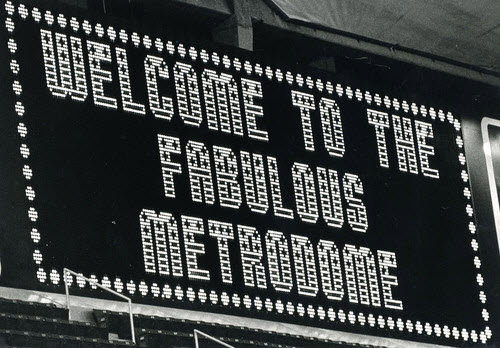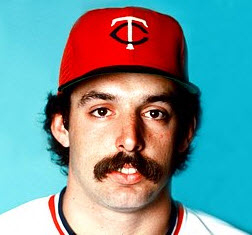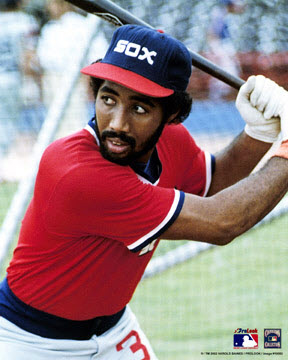Sports Illustrated recently saluted Fenway Park and Dodger Stadium, a pair of hallowed baseball shrines celebrating milestone anniversaries in 2012. Vastly different but both iconic, they remind us of the premium importance of place and aesthetics in baseball. The game could be played in a pasture, and there is a certain charm even in that, but in the great ballparks it becomes something unrivaled, something above the symmetrical sameness of football, hockey or basketball.
Never mentioned among the pantheon of great ballparks, Minnesota’s former home to Major League Baseball is also celebrating a milestone anniversary in 2012, albeit with no fanfare. Utilitarian at best when it opened 30 years ago this month, the Metrodome made early-season baseball sufferable in the North Star State, where April showers are always cold and often white, but its weatherproof, space-aged charm was soon eroded by carpet burns, trampoline bounces and vanishing pop-ups.
For some, it was unbearable from the start. A hearty contingent celebrated the Metrodome’s inaugural Opening Night elsewhere, shivering at sub-freezing Metropolitan Stadium, the Twins’ recently abandoned home, on April 6, 1982. Illuminated in the parking lot by glowing charcoal and headlights, they washed down barely warm brats with ice-cold beer, warning all who would listen of an anesthetized national pastime and its evils. Prophetic as they were, in the opening weeks of April 1982, they were merely a whisper amidst Mother Nature’s rage. A baseball purist, she unleashed an unprecedented frozen reprisal against Major League Baseball and its newest domed abomination, expressing her scorn so violently that climate-controlled starkness became a necessary salvation.
In all, brutal cold and snow postponed more than half of a questionable Opening Day slate and four American League series entirely (Texas at New York, Toronto at Detroit, Cleveland at Milwaukee and Boston at Chicago). Only two junior circuit engagements were played as planned, with Oakland hosting California and Seattle at Minnesota. The folly of scheduling two warm-weather teams and two dome teams against each other in early April (not to mention sending Texas to New York) was made even more conspicuous by Mother Nature’s snowy tantrum. It was, in retrospect, among the least festive Aprils in league history.
Bob Holbrook, creator of the American League schedule, offered a tepid guilty plea to the Toronto Star. “It sure makes the schedule-maker look stupid,” he said.
As the snow wreaked havoc, teams and owners scrambled for cover – literally.
The blizzard was epic in Milwaukee, dumping nine inches on County Stadium and sending the visiting Cleveland Indians to the Eagles Club on Wisconsin Avenue for two days of indoor workouts. Completed in 1927, the Mediterranean Revival five-story stunner was said to be haunted; Cleveland’s performance after leaving the place did nothing to dispel the rumor. The home-standing Brewers, meanwhile, considered nearby Carroll College, but eventually flew to Houston for two days of practice at the Astrodome.
“I’ve begged and I’ve hollered for changes,” said Bud Selig, then Milwaukee’s owner and president. “I think we can do a lot better than we’ve done in taking advantage of domed stadiums and warm-weather sites. But one of the problems is that there are 10 of us (cold-weather teams) trying to start the season in five warm spots. It just doesn’t work. It’s not an easy solution.”
Ninety miles to the south, the Red Sox and White Sox sat idle in Chicago where Jerry Reinsdorf had spent $6 million to renovate Comiskey Park during the off-season. But rather than basking in the glow of his fantastic new scoreboard, fresh sod and rebuilt dugouts, the White Sox co-owner was buried in snow and far less conciliatory than Selig.
“I think it’s outrageous that Minnesota and Seattle both can open in domes, but are playing each other, and that Oakland and California play each other in warm weather,” he told sportswriters. “But California doesn’t want to schedule a lot of games at home while the kids are in school and they don’t want to be playing when the Dodgers are home. They’re 45 miles apart. It’s like us saying we don’t want to be home when the Brewers are playing in Milwaukee.”
With no hope of playing in Chicago, the Red Sox packed up and traveled south – far to the south – back to its spring training facility in Winter Haven for a few bonus days of Florida sunshine. Reinsdorf, meanwhile, sought indoor options for his club. “This scheduling is ridiculous,” he said. “We should be opening against a warm-weather team. That makes the most sense. Sometimes you’ve got to have a disaster to get people’s attention.”
Conditions were no better at the corner of Michigan and Trumbull in Detroit, where the Tigers and Blue Jays were also postponed. Stranded in the hotel, Pat Gillick, Toronto’s general manager, had a flash of inspiration and packed his team. Reinsdorf did likewise and soon both the Blue Jays and the White Sox were headed to Minnesota for one of the most unusual two-day double-headers in baseball history.
April 6, 1982
The former tenants of Metropolitan Stadium opened their new home with a bang. Dave Engle’s first-inning home run gave the Twins an early lead over Seattle, then Gary Gaetti was cut down trying to extend the lead with an inside-the-park home run one inning later.
More than 52,000 roared their Teflon-topped approval of the excitement. Then Seattle went to work, eventually soaking the jubilation with an 11-7 come-from-behind victory. Calvin Griffith, the Twins’ parsimonious owner, would have preferred a win and a windfall, but he was still ebullient as his turnstiles spun. He was matching baseball’s lowest average player salary ($90,000) with its highest average ticket price ($7.50). Life was good. And it was about to get even better.
April 7, 1982
Game 2 of the Seattle-Minnesota series was slated for 7 p.m. local time. That meant the Metrodome wasn’t making money for Griffith until at least 4 p.m., an annoying waste of potential. In a fortuitous twist, there were two teams buried in snow the day before that were willing to buy time in Griffith’s fiefdom – Chicago and Toronto – and they proposed a pair of exhibition games, one before the Twins’ night game on April 7 and one after their day game on April 8. Griffith suggested that the Sox and Jays each pay a $5,000 rental fee to secure the space. They accepted, rolling into the Metrodome at dawn. Unfortunately Toronto’s equipment arrived two hours late, delaying the first pitch and forcing both teams to hurry into their uniforms, sharing a single locker room, while an umpire was pulled from his day job at Northern States Power to call balls and strikes. No spectators were allowed in the stadium.
Reinsdorf was reportedly losing $500,000 by not hosting his regularly scheduled season opener and now he was paying an additional $5,000 for his team to extend their exhibition schedule against Toronto instead. He figured the trip alone would cost $25,000. Griffith saw the humor in it.
“I’ve been giggling all day,” he told Sports Illustrated. “The Red Sox went back to Florida because the weather is so terrible in Boston, the Brewers are practicing in the Houston Astrodome, the Yankees are snowed out and the White Sox and Blue Jays are going to have practice games here.”
Dennis Lamp started the first exhibition game for Chicago, surrendering one run and four hits to Toronto, which countered with Dave Stieb followed by Jim Clancy. Using a 10-man batting order, the Blue Jays pushed a second and third run across in the fourth inning against Britt Burns and held on for a 3-2 victory in eight innings; the game shortened to accommodate pre-game batting practice for the Twins and Mariners.
Afterward, White Sox manager Tony LaRussa called it “a terrible game” for Chicago and fumed about Burns’ ineffectiveness. His players were also less than enthused about their first Metrodome experience. “The ball wasn’t going anyplace,” Mike Squires told Robert Markus of the Chicago Tribune. “Carlton Fisk crushed one in BP and it didn’t go out.” But Squires’ opinion ran contrary to others. Minnesota’s Bobby Castillo shared his first impressions with Doug Grow from the Minneapolis Star-Tribune, telling him that pitchers “would need a calculator and a sense of humor” to pitch there. The Twins and Mariners backed his claim hours later, combining for 12 more runs in a 7-5 Twins win, their first in the Metrodome. A hometown favorite, Kent Hrbek, had no problem escaping the dome’s dimensions, stroking the first home run of his rookie season. Only 5,213 were on hand to witness it, a far cry from the capacity crowd of one day prior.
April 8, 1982
Winter’s icy grip clung to the Midwest and Northeast, but in the Metrodome, all was well. In fact, the Windy City media had actually grown quite fond of the place. “By Chicago standards, the Metrodome is a real hot-air palace,” Neil Milbert wrote in the Chicago Tribune. “A double-decked structure with blue seats and a blue backdrop looking down on a completely artificial surface except for small patches of dirt surrounding home plate and the three bases.”
New Toronto skipper Bobby Cox was also a believer. “Domes do wonders,” he told the Star-Tribune. “This is the logical place to be.” He would recant nine years later, victimized by the Metrodome’s fog of war in a memorable World Series defeat, but for now he was satisfied. The White Sox, however, were unconvinced. “Let’s face it, when it’s a nice day, you don’t want to be in this place,” Greg Luzinski told the Tribune.
For all its warts – which on this day included flooded toilets and a roof leak that puddled right field – the Metrodome proved comfortable for some. Gaetti, the Twins’ third baseman, was likely among its leading advocates as he piled up four hits including a triple and two home runs in Game 1 against Seattle, followed by another hit in Game 2. Game 3, an afternoon affair, produced two more hits and another home run for Gaetti in a 4-1 Twins win.
Among the White Sox, clad in new gray uniforms, there was also a Metrodome believer: Harold Baines.
With his exaggerated leg kick, the slugger from Maryland ripped a pair of home runs in Chicago’s second exhibition game against Toronto, a 5-4 Sox win played in the evening hours following Minnesota’s dispatching of Seattle. Twins ticket holders, of which there were only 10,412, were allowed to stay and watch the nightcap for free. About 2,000 remained, seeing Richard Dotson get the win over Luis Leal.
Back in Toronto, the Metrodome was making a big impression on lawmakers. “That’s what we want here,” said Toronto Metro Chairman Paul Godfrey. “The time has come.”
It would be seven years after the Jays’ initial Metrodome experience, but eventually the time did come, as Toronto opened its SkyDome in 1989.
Spring Arrives
Chicago finally opened its season on April 11 in New York, sweeping a doubleheader from the Yankees. Toronto escaped Minneapolis sooner, needing only to arrive in Milwaukee on April 9 where the Brewers pounded them 15-4, baby steps en route to the American League pennant. The Mariners, still stinging from a lost series in Minnesota, fled for California sunshine and lost again in Oakland. As for Minnesota, the Twins remained in the friendly Metrodome confines and captured two of three from the California Angels, causing an unusually optimistic stir. But much like that of their dome, the shine soon wore off, and Minnesota limped to a club-record 102 losses.
The Metrodome would eventually host the Twins’ greatest triumphs, too, with World Series victories in 1987 and 1991, but it couldn’t escape the purists’ ridicule. Its aesthetics were never a match for baseball’s green cathedrals, the experience never one for Sports Illustrated praise. Thirty years after its blue gates opened, the Metrodome looms today without celebration, without prose and without a big league tenant. It is a “hot-air palace” with no king, a monument to practicality that has no place in a game so whimsical as big league baseball.
– End –
Update: The video quality is rough, but ClassicMLB11 unearthed a gem and posted it to his YouTube site recently. It’s the Twins’ first regular-season game in the Metrodome from April 1982. View it here:



great article metrodome has much history that needs to be shared
Pingback: The Metrodome in April 1982 | Twinstrivia.com